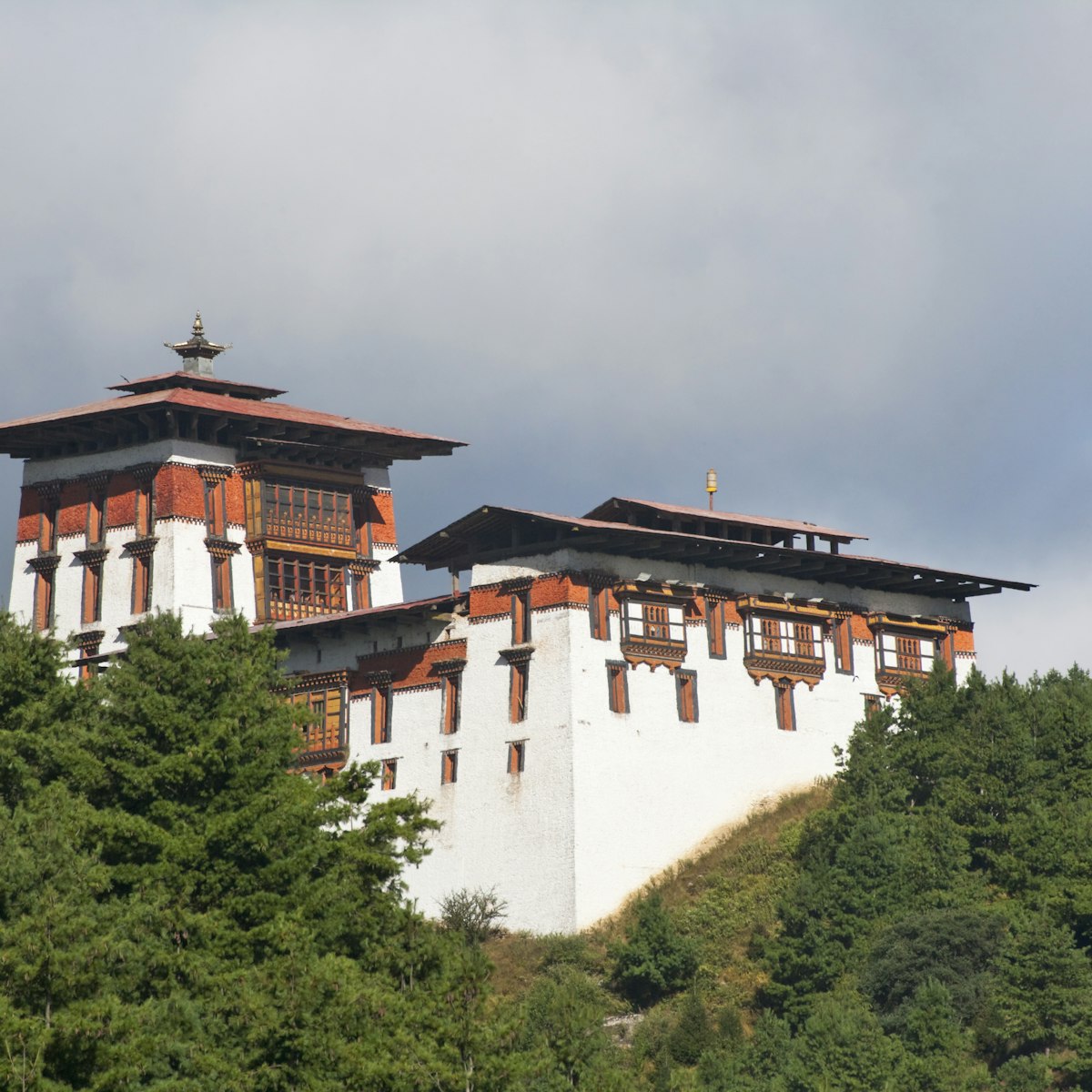A bumpy 10km drive up the Chokhor valley from Thangbi Goemba is the small region known as Ngang-yul (Swan Land). The site was visited by Guru Rinpoche, but the present Ngang Lhakhang was built in the 15th century by Lama Namkha Samdrup, a contemporary of Pema Lingpa.
Despite the recently renovated exterior, the interior contains some lovely statues and paintings. The primary statue is of Guru Rinpoche, flanked by early Buddhist missionary Shantarakshita and Tibetan king Trisong Detsen. There is a mural of the Zhabdrung on the side wall opposite the altar and an image of Guru Rinpoche on a lotus surrounded by two duck-like swans.
The upper chapel is a goenkhang, with statues of the 'Tsela Nam Sum' trinity of Tsepame, Namse and Drolma, with Chenresig standing to the left. The statue of Guru Rinpoche to the right was fashioned by Pema Lingpa himself. Protector deities lurk in the shadows. Hanging from the rafters are masks used in the three-day Ngang Bi Rabney, a festival organised in the middle of the 10th month by the two main clans of the village in honour of the temple's founder.
It's possible to stay overnight at the rural Balakha Farmhouse, homestay accommodation right beside the lhakhang. Accommodation is simple, but you'll get a comfortable mattress on the floor, a shared organic meal with the family and a clean Western toilet. The friendly owners have looked after the lhakhang for generations.
A bridge over the Chamkhar Chhu means it's possible to drive up to the lhakhang, but it's a much nicer walk (of two hours) from Thangbi Goemba along the true left bank of the river. En route you can detour to explore the 17th-century ruins of Draphe (Drapham, or Damphel) Dzong, a 30-minute gentle uphill walk from Ngang Lhakhang.
The long day hike over the Phephe La (signed 'Febila') to Ogyen Chholing Palace in the Tang valley also begins here, on what is called the Bumthang Cultural Trail.





